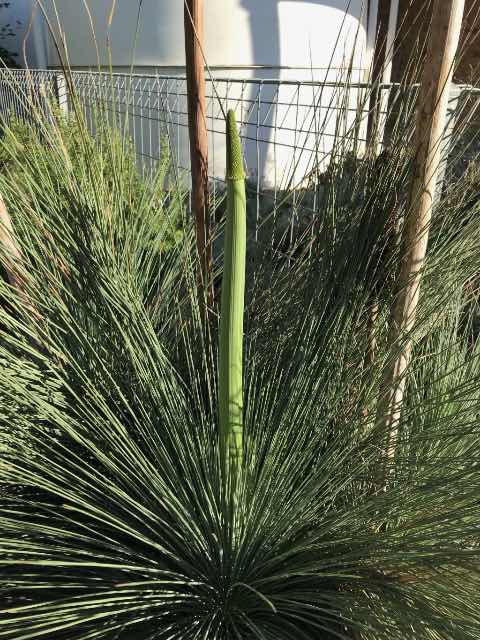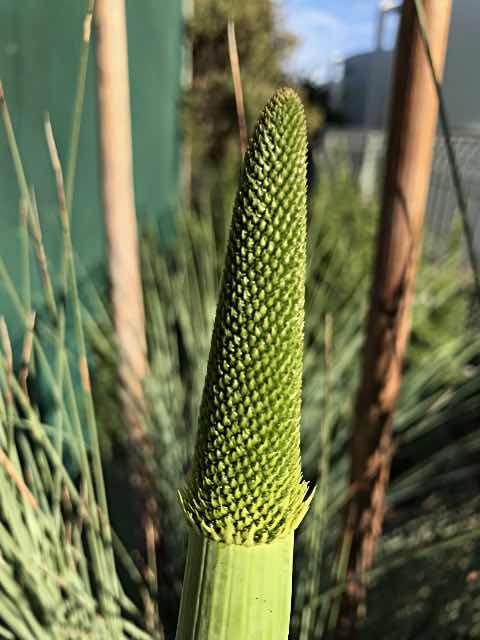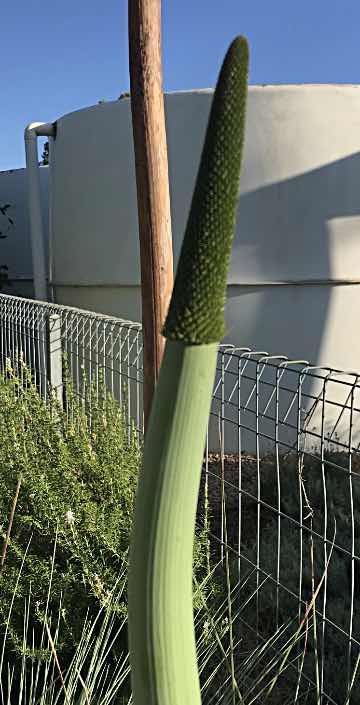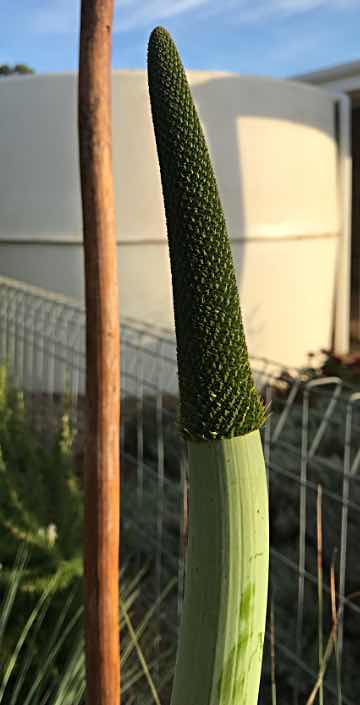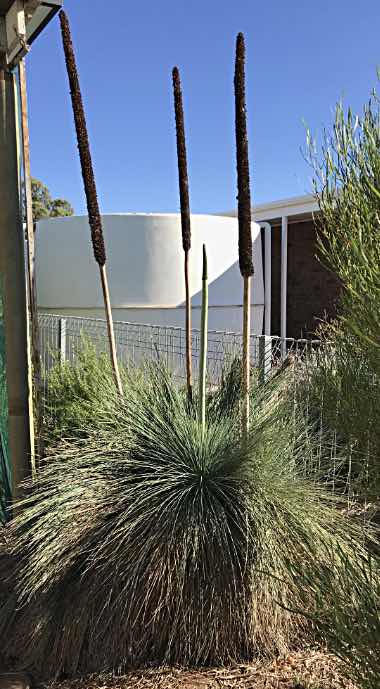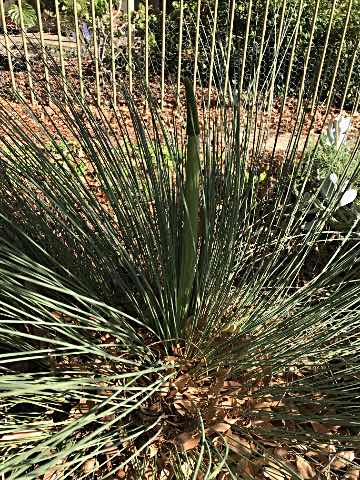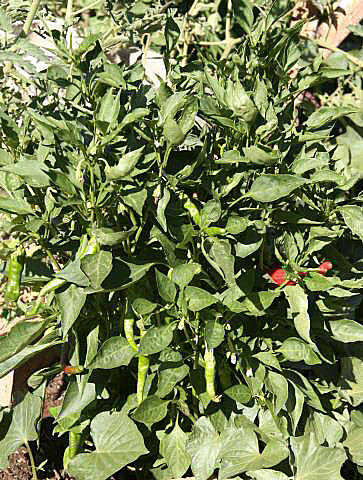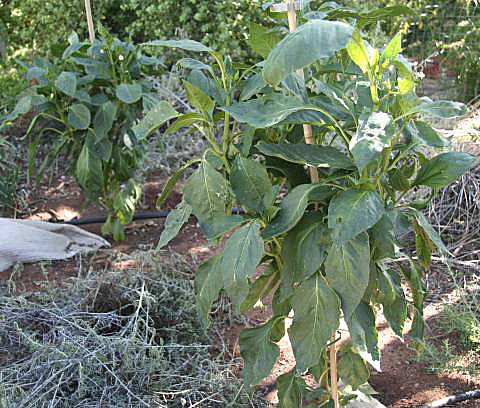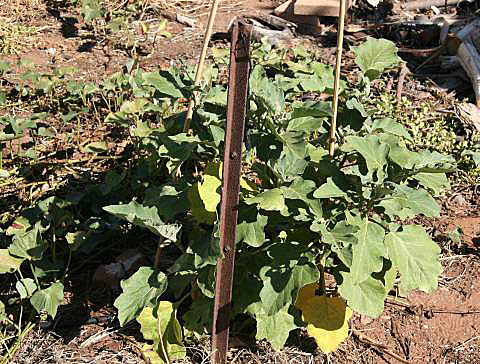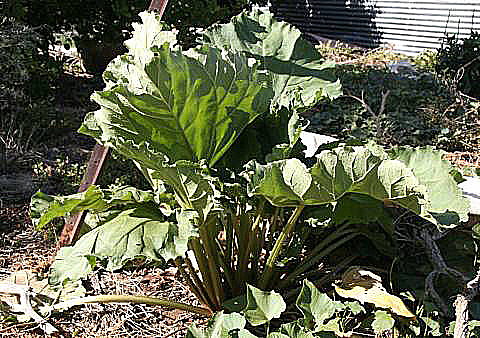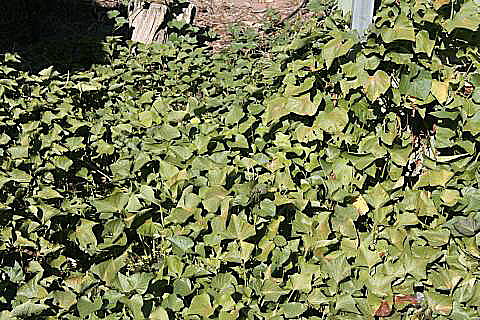Grapes, which can also be used as ornamental plants,
are elsewhere on this page.
|
|
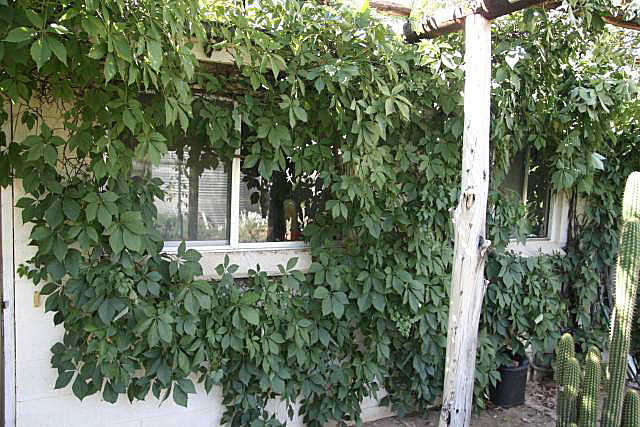
| | Virginia creeper
|
|
Virginia creeper is a very hardy plant that will provide shade in summer,
when it is sorely needed in the increasingly hot Crystal Brook climate,
and let the sun in in winter.
The botanical name is Parthenocissus quinquefolia and the plant
originated from North America.
|
|
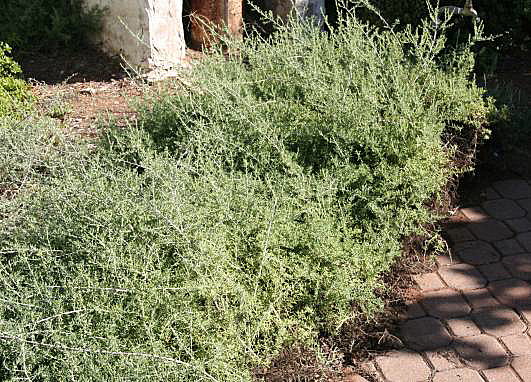
| | Ruby saltbush
|
|
Botanical name
Enchilina tomentosa, this small Australian native
shrub is very easy to grow from seed, keeps green all year round with
little water, and has attractive tiny,
edible (bush tucker) red and purple berries in season (not in the photo).
It will reproduce from its own seed, but is easy to control by pulling out,
or hoeing out, unwanted plants.
|
|
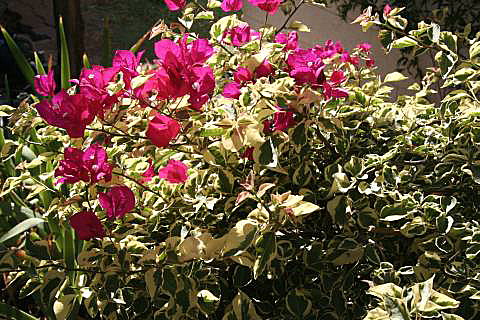
| | Bougainvillea
|
|
This is a small variegated plant in a pot; there are many large
bougainvillea (
Bougainvillea species) plants growing in the ground
around Crystal Brook.
They are great for flowers, not so good if you don't like spines.
|
|
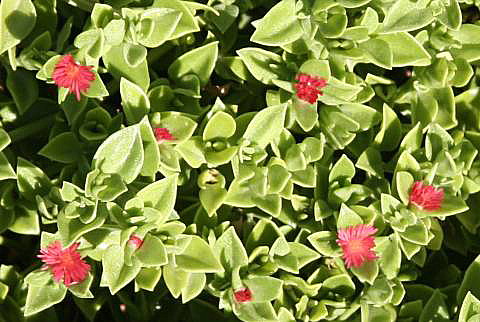
| | Heartleaf iceplant
|
|
Mile-a-minute is the local name, but is seems a more widely used common
name for this easy-to-grow succulent ground-cover is hearleaf iceplant.
Its botanical name is
Aptenia cordifolia.
It requires little water, will handle exposure to full sun, and is (at
lease in a back-yard situation) easy to control.
It provides a nice carpet of green right through the summer.
It will not handle being walked on, and it goes dormant in winter when
weeds can grow over the top of it (particularly soursob).
|
|
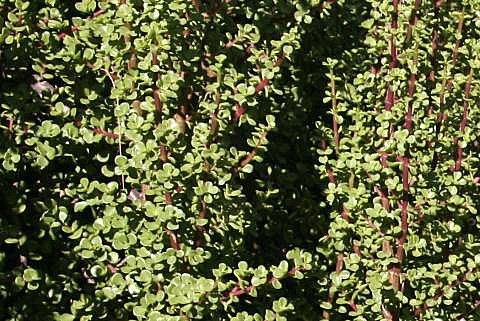
| | Chinese jade
|
|
This succulent grows very well in Crystal Brook, and will easily survive
the hot, dry, summers with little watering, providing welcome green
foliage in the garden.
It needs very little attention, except to cut it back periodically.
In a very hot period it will produce occasional flowers.
|
|
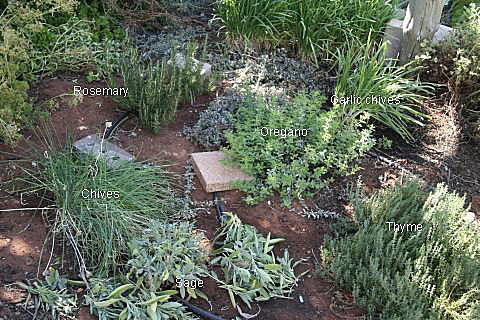
| | Chives, garlic chives, oregano, rosemary, sage, thyme
|
|
In addition to the herbs on the right mint and parsley grows well
(the photo was taken in summer, the wrong time of the year for parsley).
As mentioned elsewhere on this page, citrus trees and stone fruit (other
than cherries) do very well in Crystal Brook.
|
|
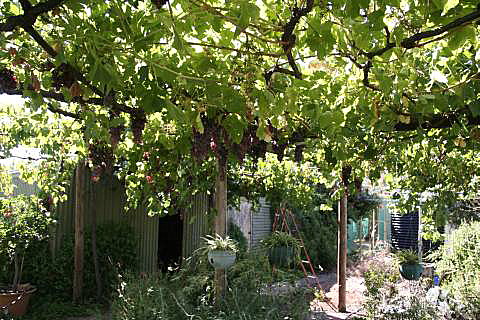
| | Grapes
|
|
The table grape vines (
Vitis vinifera) on the trellis in the
illustration have taken about
six years to reach their current stage of growth.
There are seven varieties.
Both table grapes and wine grapes do very well at Crystal Brook.
Many Australian native plants, including several
Acacia, Allocasuarina,
Callistemon, Callitris, Casuarina, Dodonaea, Pittosporum
and
Senna species do very well at Crystal Brook.
|
|
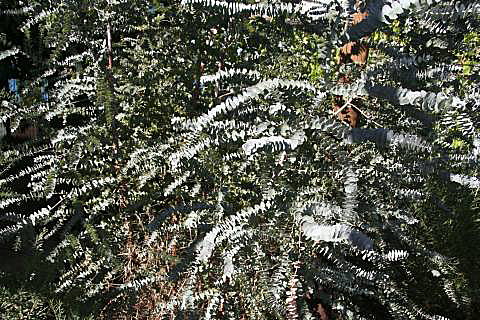
| | Eucalypt
|
|
Too many Eucalypts (
Eucalyptus species) to name, including many
decorative Western Australian species, will grow very well at Crystal Brook.
Yacca, alternatively spelled yakka or yacka
| |
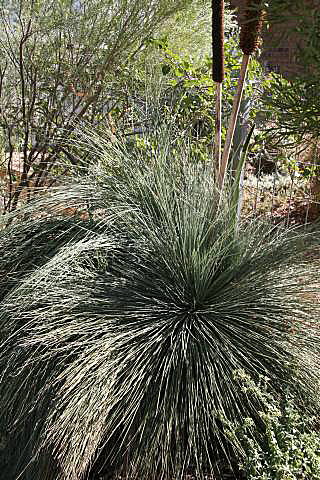
| | Yacca
|
|
Yaccas (as they are known in South Australia, also grass trees or black-boys),
Xanthorrhoea quadrangulata, are native to the region and grow well in Crystal Brook.
They grow slowly anywhere, the specimen in the photo was about ten years old (when this photo was taken in 2010).
While mature plants can be bought from nurseries, I've heard that they commonly die after a few months or up to a year.
They can be propagated by seed, either into a tube with potting mix or direct into the soil where they are to grow. The seeds will germinate when they are ready; I have found it best to plant the seeds in tubes and then place the tubes somewhere in the open air and forget about them, the seeds may take a year to germinate.
Update, 2022/01/27
Since starting this page my wife Denece and I have seen many transplanted yaccas in the Mandurah area of Western Australia. Apparently they are removed from areas that have been developed for housing etcetera and transplanted in reserves in the centre of, or beside, roads. All the leaves are cut right back to the base at the time. A large percentage seem to survive for at least several years.
Other references to, and photos of, yaccas on this site:
- Gleeson Wetlands at Clare; yacca seedlings and later, in October 2021;
- A group of yaccas in Alligator Gorge;
- A striking specimen in Alligator Gorge;
- Yacca at Elysium; on a page created in 2007;
- Yaccas at Hucks Lookout, in the Flinders Ranges, 2014;
- Heavily browsed yaccas at Hucks Lookout in the Flinders Ranges, 2020;
- Yaccas on Kangaroo Island in 2009;
- Yaccas in regenerating bush on Kangaroo Island in July 2021;
- Yaccas in Kings Park, WA, 2018;
- Yaccas in Singapore's Flower Dome, 2015;
- Yaccas in Spring Gully Conservation Park, 2021;
- Yacca in the Stirling Range, WA, 2018;
- The yacca-look-alike Kingia australis in the Stirling Range, 2018;
- Yaccas in an old page on wildflowers;
- And several references in Western Australia.









